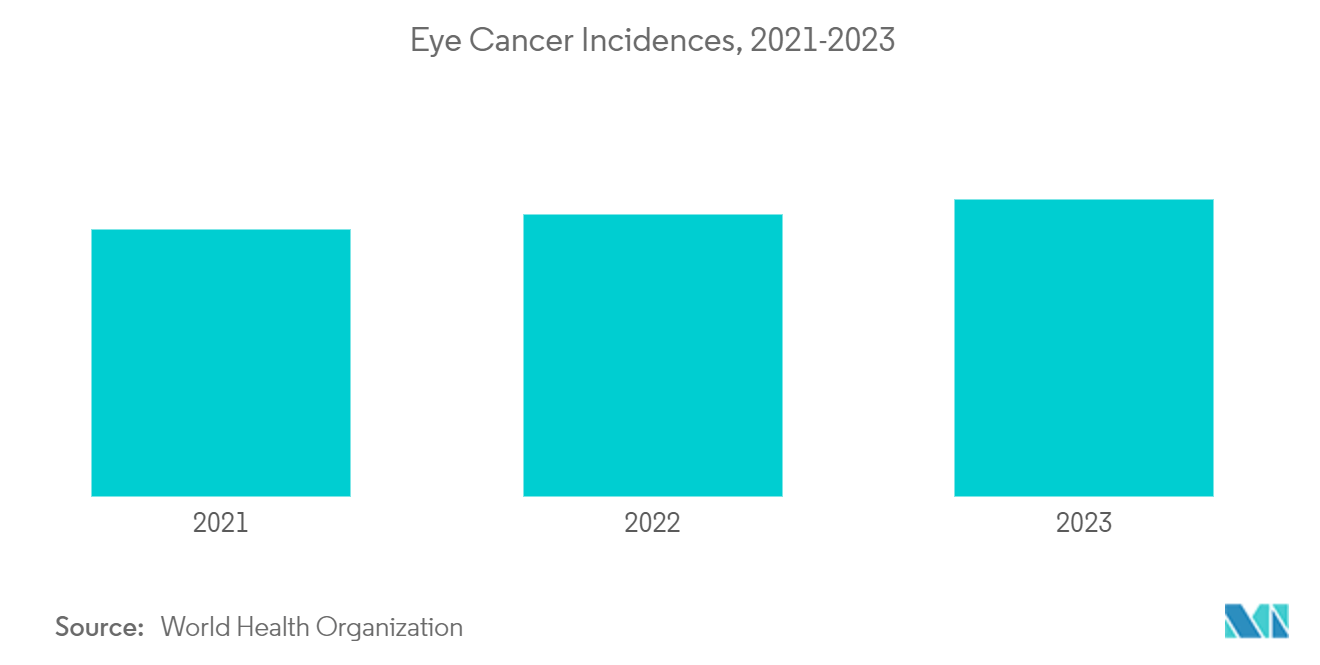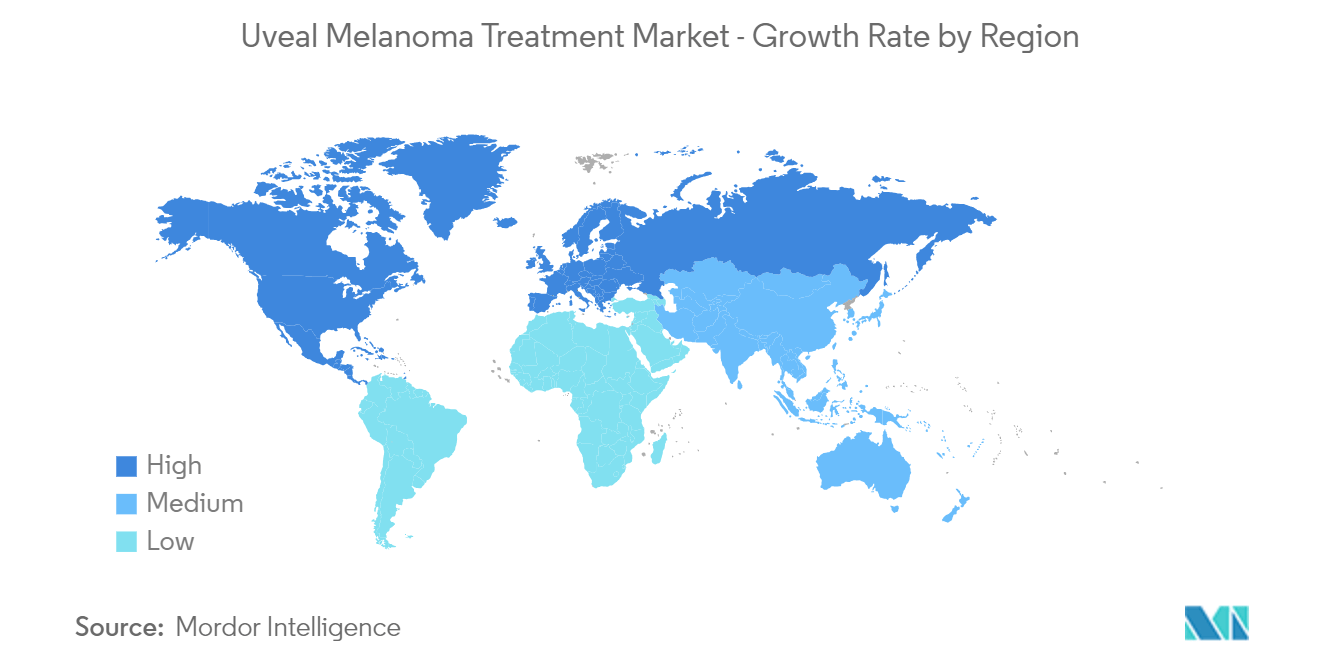Market Trends of Uveal Melanoma Treatment Industry
The Targeted Therapy Segment is Expected to Witness Significant Growth During the Forecast Period
There are a number of important factors driving the targeted therapy segment in the treatment of uveal melanoma, which reflects changing clinical needs and advances in medical research. Gaining more insight into the genetic and molecular makeup of uveal melanoma is one of the main motivators. A 2022 Journal publication by the National Institutes of Health revealed critical mutations and pathways in the GNAQ, GNA11, BAP1, and SF3B1 genes that support tumor growth and metastasis in uveal melanoma. These genetic insights have catalyzed the development of targeted therapies designed to inhibit specific molecular mechanisms. This advancement represents a significant shift in the uveal melanoma treatment landscape, offering precise and effective options compared to traditional methods. The identification of these pathways enhances the potential for personalized medicine and presents substantial market opportunities for pharmaceutical companies investing in targeted cancer therapies.
Several ongoing clinical trials are evaluating the role of immunotherapy in the management of uveal melanoma. Several ongoing clinical trials are exploring the role of immunotherapy in the management of uveal melanoma, aiming to improve patient outcomes by harnessing the body's immune system to target and destroy cancer cells. For instance, a phase II clinical trial is evaluating the efficacy of pembrolizumab, a PD-1 inhibitor, in patients with metastatic uveal melanoma. Another notable trial is investigating the combination of nivolumab and ipilimumab, both immune checkpoint inhibitors, to determine their effectiveness in controlling tumor growth and prolonging survival. Additionally, a study is assessing the use of adoptive cell therapy involving tumor-infiltrating lymphocytes (TILs), which are extracted from the patient's tumor, expanded in the lab, and reinfused to boost the immune response against cancer cells. These trials represent significant steps forward in developing new, potentially life-saving treatments for uveal melanoma.
According to a 2022 Journal published by the National Institutes of Health, a key focus area is the development of IDH1 inhibitors such as ivosidenib (AG-120). These drugs target metabolic pathways altered by mutations in the IDH1 gene, which result in the production of oncometabolites that drive tumor growth. By inhibiting IDH1, these therapies aim to disrupt this process, potentially slowing or halting disease progression. Current clinical trials are evaluating the effectiveness and safety of IDH1 inhibitors for patients with uveal melanoma harboring these specific mutations.
According to a Journal published by the National Institute of Health in 2022, the advent of bispecific T-cell engagers (BiTEs) also marks a promising development in targeted therapy. These innovative agents are engineered to bind simultaneously to T-cells and cancer cells, thereby directing the immune system to attack the tumor more effectively. One example is IMCgp100 (tebentafusp), which is being tested in clinical trials for uveal melanoma. Initial findings suggest that BiTEs can elicit a positive clinical response with a manageable safety profile, warranting further exploration in larger trials to confirm their potential benefits.
In conclusion, the targeted therapy segment in the uveal melanoma treatment market is poised for substantial growth, driven by advancements in genetic research, the identification of key mutations and pathways, and the development of precise, effective therapies that offer improved outcomes over traditional treatments.

North America is Expected to Dominate the Market
North America is expected to dominate the market due to rising incidence rates of eye cancer, technological advancements in drug discovery, the surge in the geriatric population, the presence of key players, and increasing research and development activities. In North America, the incidence of uveal melanoma varies, with the United States reporting approximately 5.1 cases per million people annually, according to data from the National Cancer Institute (NCI), 2021. This translates to about 1,500 new cases each year. Already, uveal melanoma is more common among individuals with lighter skin and those with certain genetic predispositions. In addition to this, according to Melanoma Canada 2022 stats, approximately 200 people are diagnosed with uveal melanoma every year.
Moreover, the presence of regulatory bodies, such as the FDA, is streamlining the approval process for new therapies, providing expedited pathways for treatments that address unmet medical needs. For example, in August 2023, the FDA approved Hepzato Kit, developed by Delcath Systems Inc., as a liver-targeted therapy for adult patients with uveal melanoma who have unresectable liver metastases affecting less than 50% of the liver and no disease outside the liver or only extrahepatic disease confined to the bone, lymph nodes, subcutaneous tissues, or lung that can be treated with surgery or radiation.
Additionally, several prominent players in the market are focused on expanding their product portfolio, which in turn is projected to create numerous growth opportunities for the market, thereby influencing the market's growth in the region. For instance, in June 2024, IDEAYA Biosciences Inc. announced promising clinical results from the ongoing investigator-sponsored Phase 2 trial of darovasertib as neoadjuvant/adjuvant treatment in uveal melanoma (UM) and a clinical update for a Phase 2 company-sponsored neoadjuvant UM study.
Therefore, owing to the factors mentioned above, the growth of the studied market is anticipated in North America.


